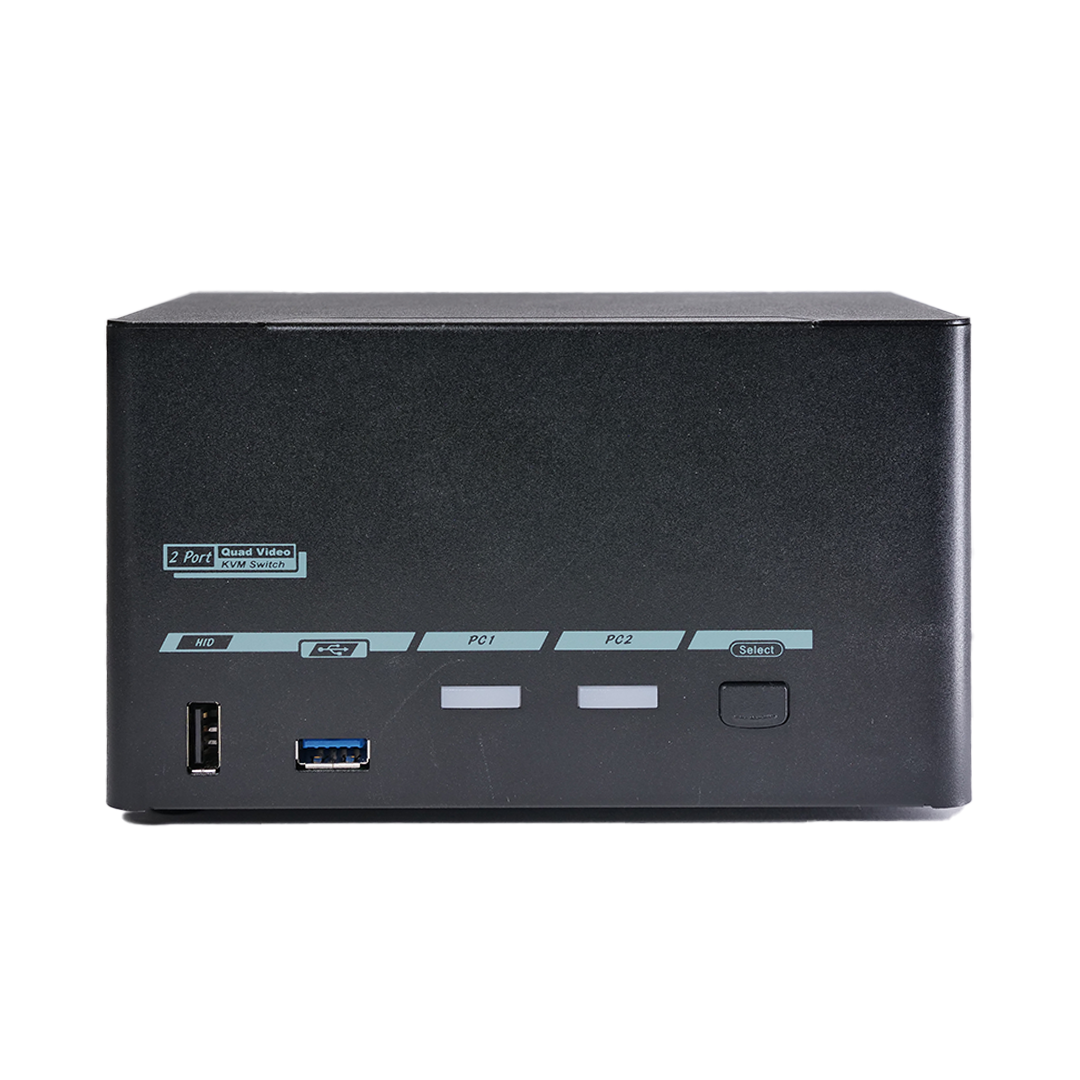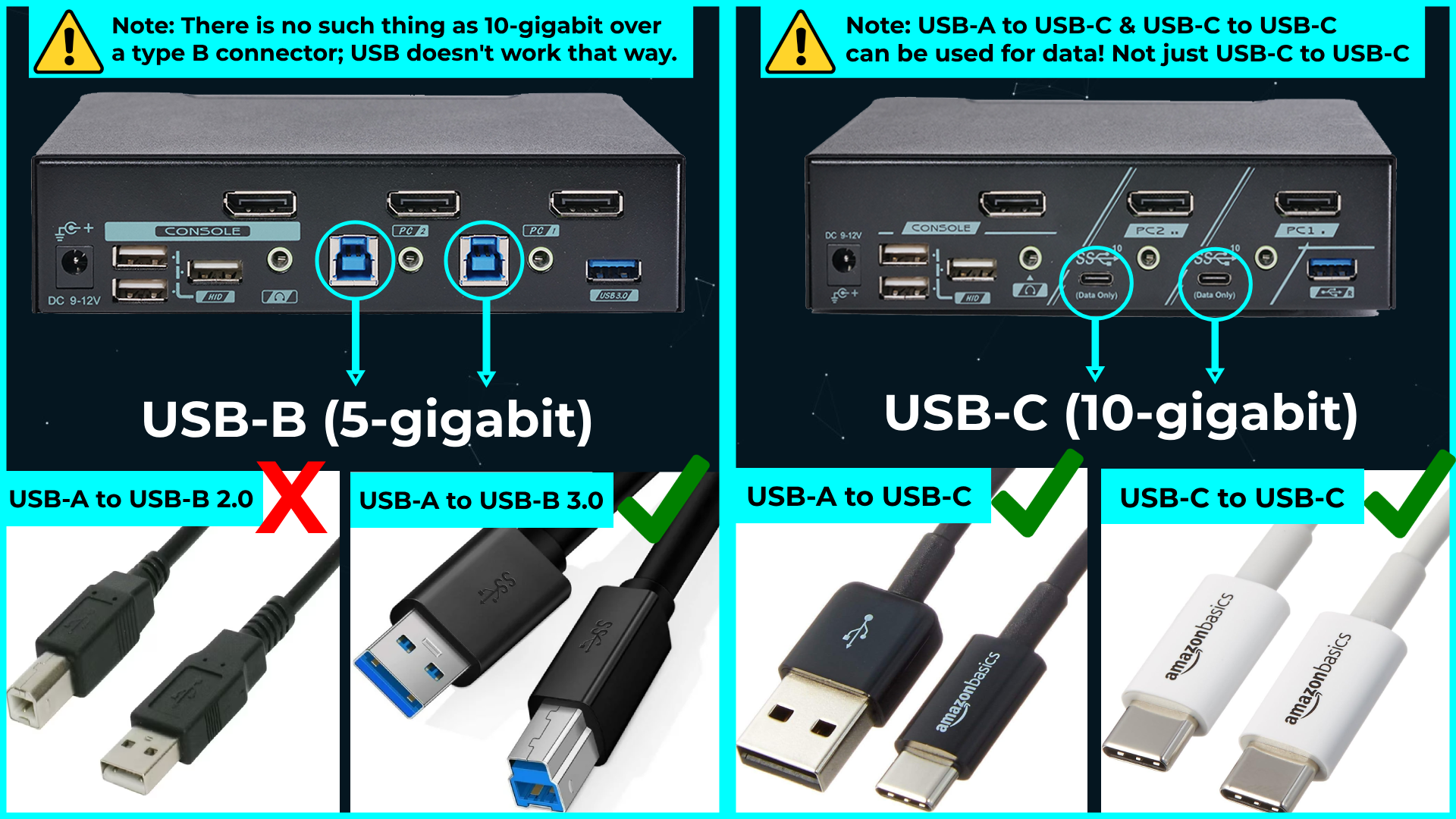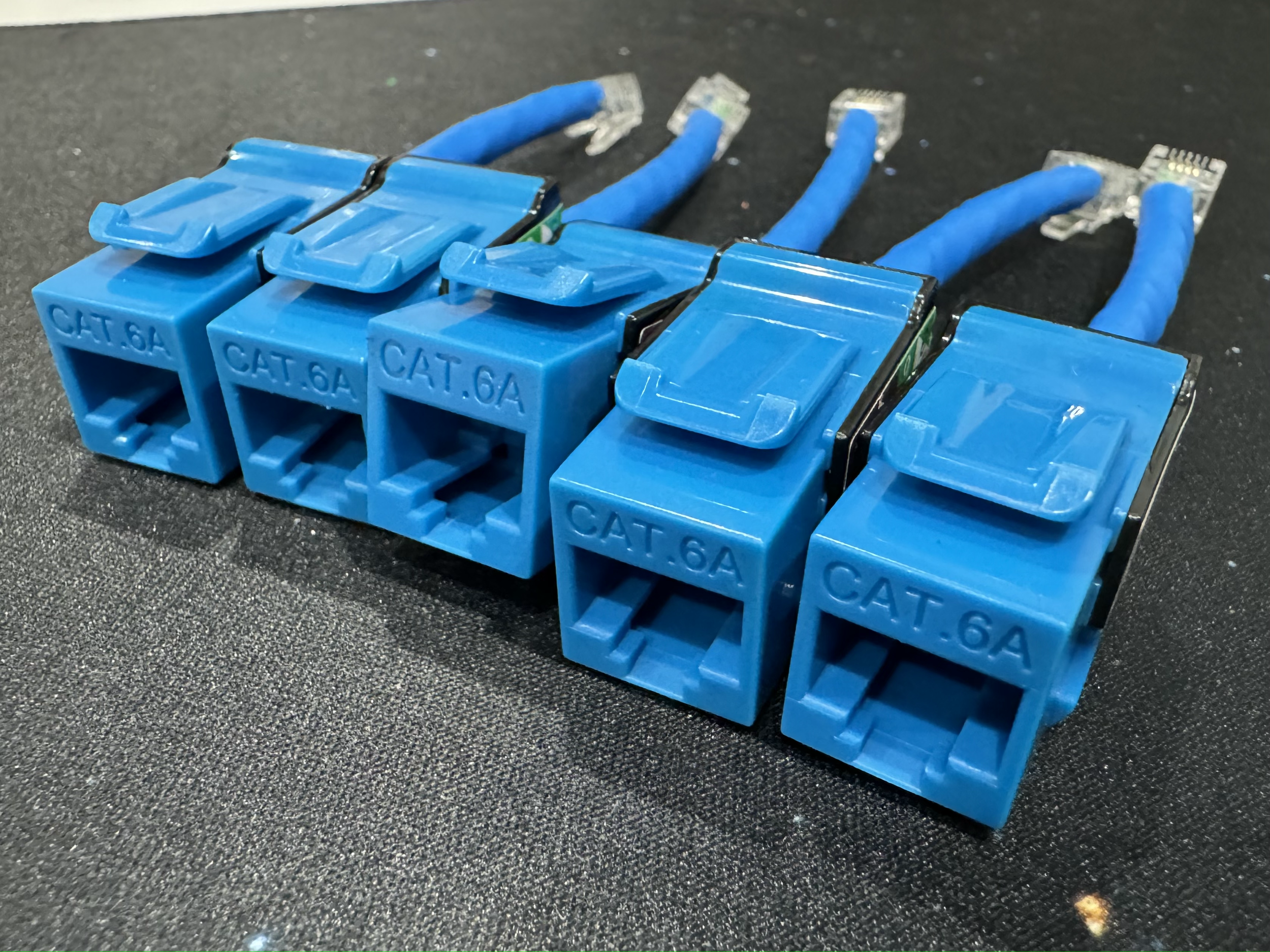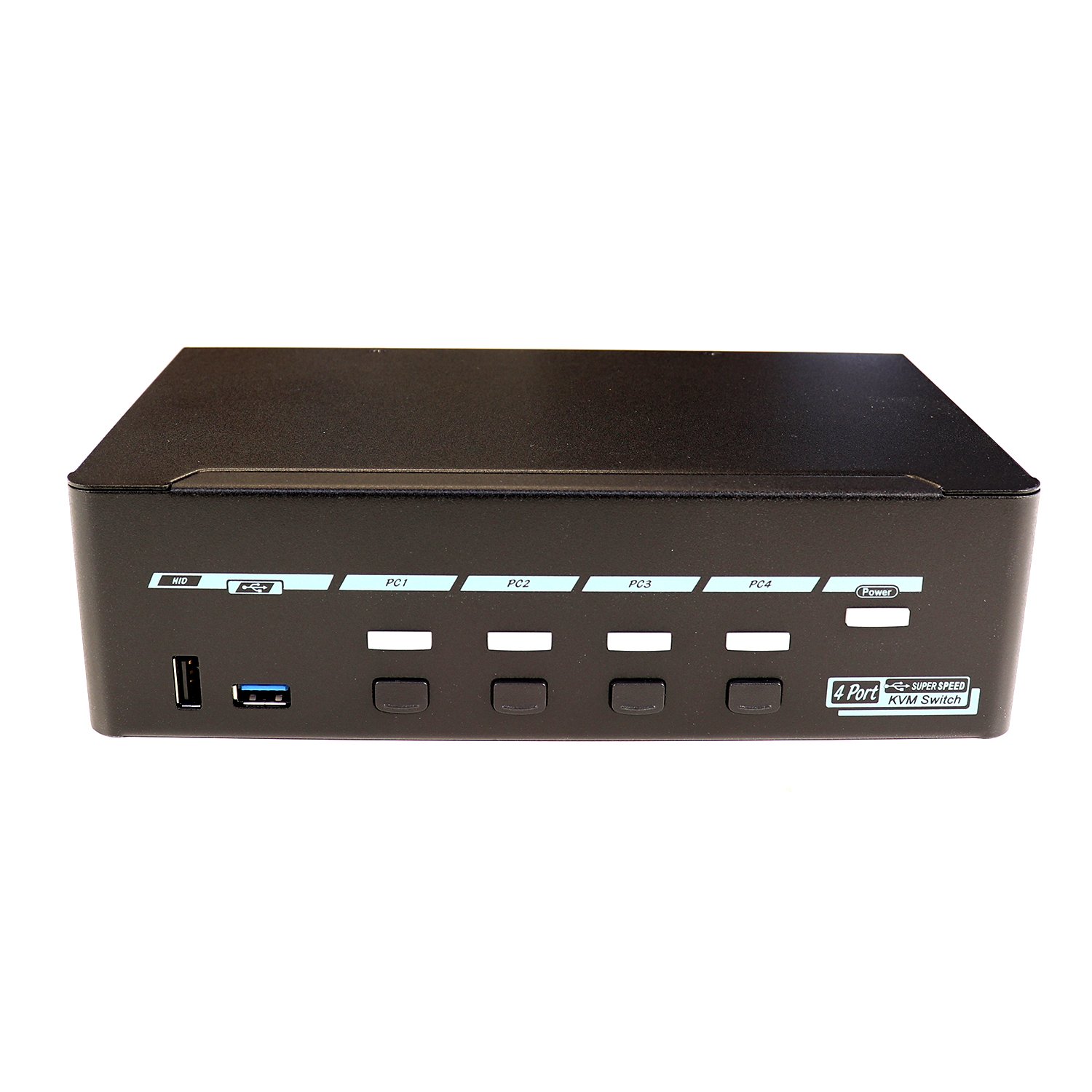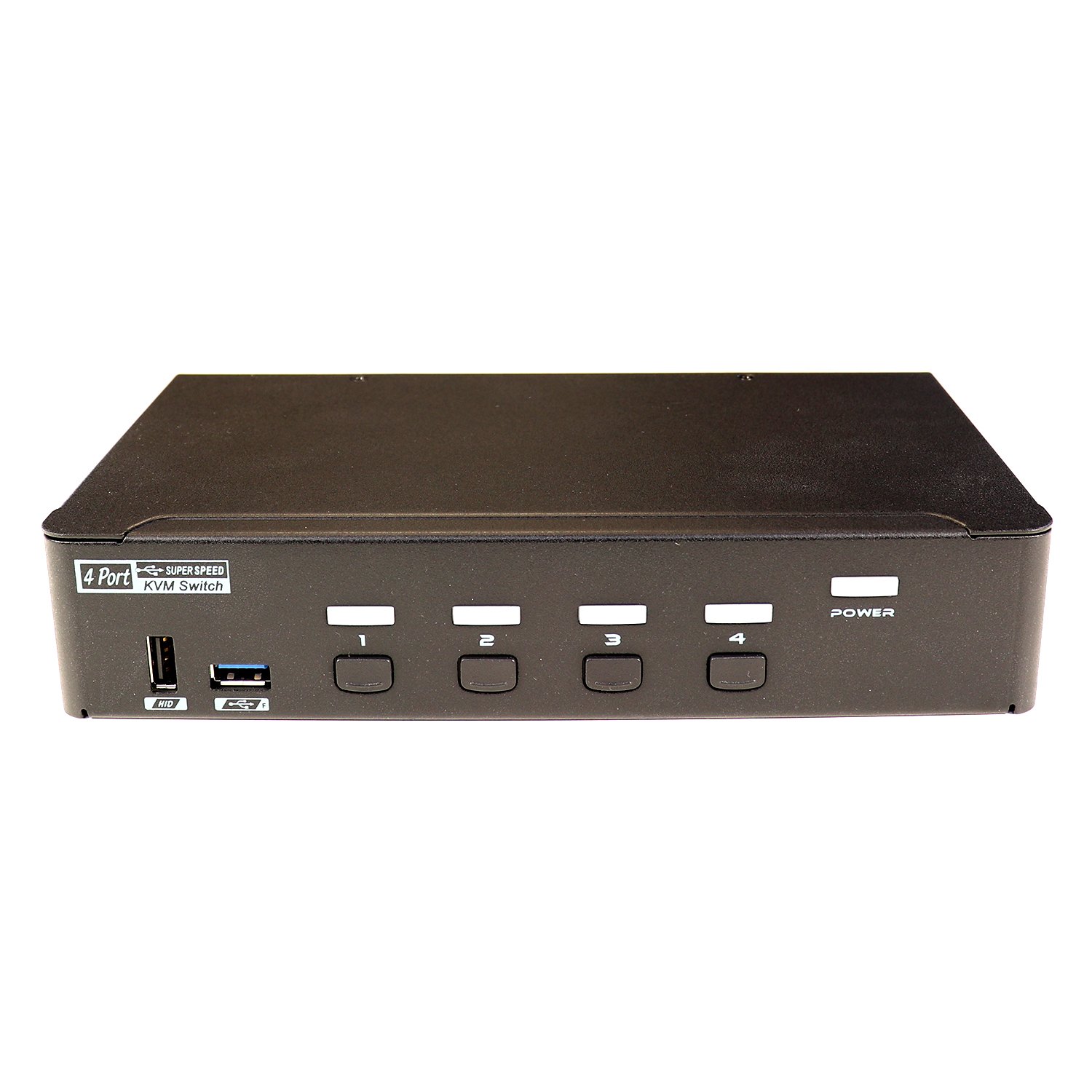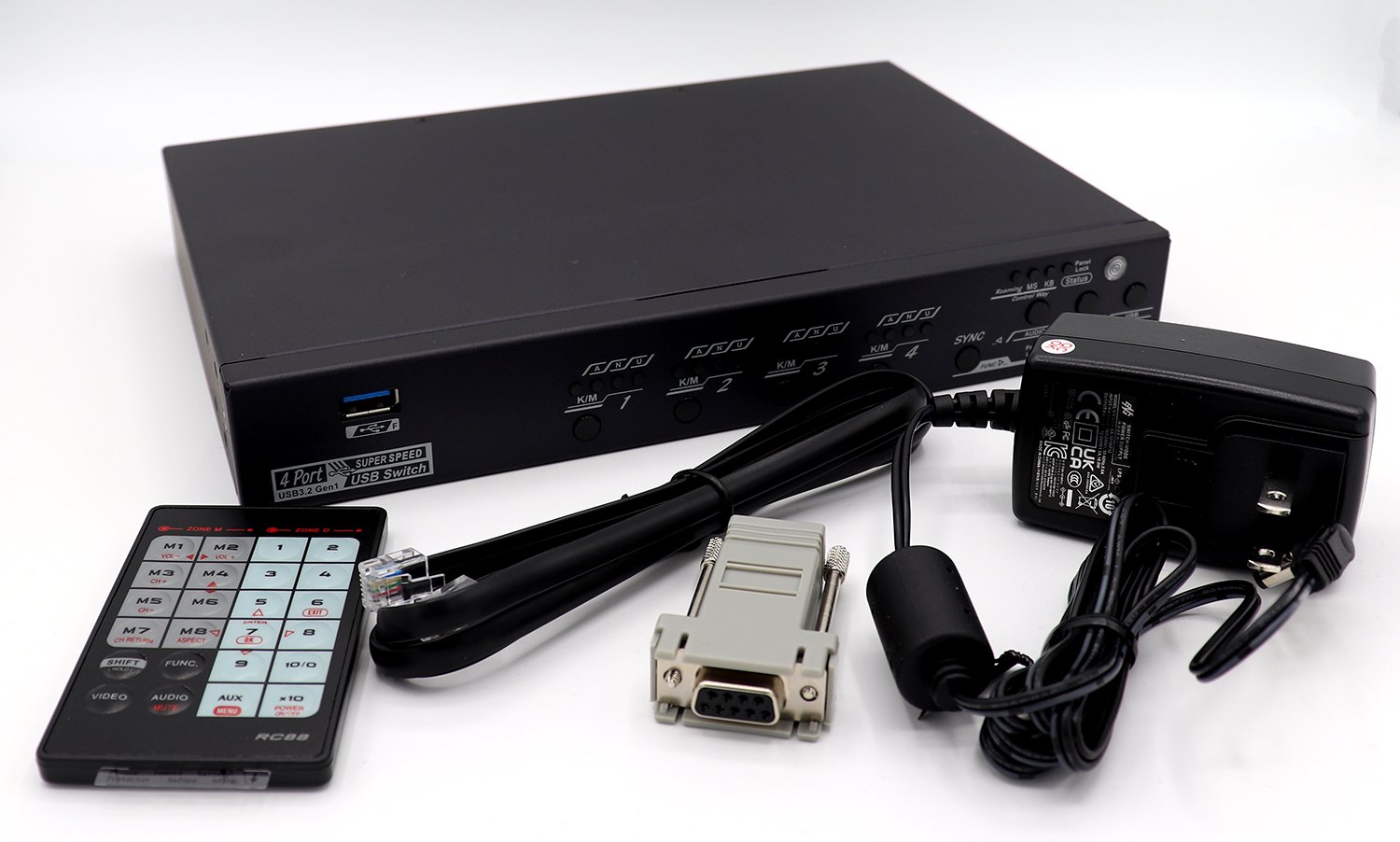This KVM switch is for use with four (4) monitors plus other USB peripherals between up to two(2) computers.
How our KVMs are different:
Most of the time KVM switches are meant to work with servers, and basic mice and keyboards.
Our KVMs:
works with USB 3.0 (USB 3 5gbps, or USB 3.2 gen 1) peripherals as well as USB 2.0 HID-type devices.
works with high-end RGB gaming keyboards like keyboards from Corsair*, Cougar and more
tested with keyboards that have built-in USB hubs as well as USB passthrough.
*See the ‘Additional Info’ section for extra details regarding the use of Corsair keyboards.
Features:
Full DisplayPort switching capabilities
One DP 1.4 connection from each computer (up to 4k/120hz or 8k/30hz).
Lower resolutions + Higher framerates possible e.g. 144hz @ 1440p (Overclocking not supported)
DisplayStream Compression Supported
Intelligent EDID Engine for HDCP Rekeying (Computers know when the port is inactive. Check out the Level1Techs repeater if you need monitor emulation).
HDCP Passthrough Supported (maintains HDCP signal integrity)
Intelligent USB HID passthrough (includes work-arounds for known problematic devices)
Choice of AU, EU, UK, & US power adapters
Rear Inputs:
2x 3.5mm Audio (may need a ground loop isolator)
8x DisplayPort 1.4
2x USB 3.0 "B" type (USB 3 5gbps, or USB 3.2 gen 1) [5gbps model]
2x USB C (USB 3 10 gbps, or USB 3.2 gen 2) Data Only Inputs [10gbps model]
Rear Outputs:
1x DisplayPort 4 connection
3x USB 2.0 Ports
1x USB 3.0 (USB 3 5gbps, or USB 3.2 gen 1)
1x analog 3.5mm audio
Front:
Push button for switching Inputs
1x USB 2.0 HID port
1x USB 3.0 "A" type (USB 3 5gbps, or USB 3.2 gen 1) ports (up to 1A current) [5gbps model]
1x USB 3.0 "A" type (USB 3 10gbps, or USB 3.2 gen 2) ports (up to 1A current) [10gbps model]
Dimensions: 6.25” w x 4”d x 3.725”h (15.9 x 10.2 x 9.5 cm) Warranty: One (1) year free parts and labor service warranty.
Rack Mount Kit:Not compatible with our Level One rack mount kit. KVM Rack Mount Kit not included
For technical support or questions regarding KVMs and their accessories that are not answered in the product description or additional info section, please submit a support ticket.
NOTE: If you're planning to use 4 displays with a laptop, make sure your laptop actually supports 4 displays!
If you need to take HDMI into this KVM we recommend A USB-powered HDMI to DP adapter. (DP to HDMI is not the same thing!). Also, bi-directional cables if you require an adapter may be required for best results.)
While we don’t recommend USB switching with mass storage devices, it is possible. It will also let you share peripherals like scanners and printers through USB (note: Maximum 1A power through USB connections).
Each input on all models of the KVM require both a full-size DisplayPort 1.4 connection and a USB connection. Both Type A to C or Type C to C cables are supported for the input ports on the KVMs.
USB 2.0 cables (4 conductor) in a type C format are NOT Compatible.
Important Usage Information: Corsair keyboards are currently unable to use KVM or KM hotkeys when plugged into HID ports.*
Why Our KVM Switches Don’t Include an Ethernet Port
We often get asked why our KVM (Keyboard, Video, Mouse) switches don’t come with an Ethernet port. It’s a great question — and the answer has everything to do with keeping your network stable and your devices protected.
Our KVM switches are designed to cleanly switch control of your keyboard, video, and mouse — but networking is a different story. If we were to add an Ethernet port and try to switch it between devices, we’d essentially be reinventing something that already exists: a network switch.
Network switches are made to manage multiple devices on a shared network reliably and simultaneously. They handle traffic differently and are designed for constant connectivity — not for quick, manual switching like a KVM. Combining these two roles could lead to unnecessary complexity and reliability issues.
In short, we believe in using the right tool for the job. That’s why we leave networking to the dedicated Ethernet switches — and focus on building rock-solid KVMs that do their job well.
Monitor Emulation
> This KVM does not support monitor emulation <
Monitor emulation makes sure the input has an exact copy of the display's EDID (Extended Display Identification Data) even when disconnected. Being that this KVM does not have monitor emulation, when switching between desktops, your monitor and KVM will re-handshake. AKA the windows will shuffle unless you have a software or hardware solution.
For your convenience, here are some compatible options that we know of with this KVM:
Windows
Windows 11 - Settings > System > Display > Multiple Displays (drop down) and check the option labelled "Remember windows locations based on monitor connection" and uncheck "Minimize windows when a monitor is disconnected"
Windows 10 - Persistent Windows https://github.com/kangyu-california/PersistentWindows
macOS
macOS Ventura (and newer) - System Settings > Desktop \& Dock > Mission Control and uncheck the box next to "Automatically rearrange Spaces based on most recent use"
macOS Monterey (and older) - System Preferences > Mission Control and uncheck the box next to "Automatically rearrange Spaces based on most recent use"
You can also use the terminal to change the setting.
To disable rearrangement:
defaults write com.apple.dock "mru-spaces" -bool "false" \&\& killall Dock"
credit: https://apple.stackexchange.com/questions/214348/how-to-prevent-mac-from-changing-the-order-of-desktops-spaces

